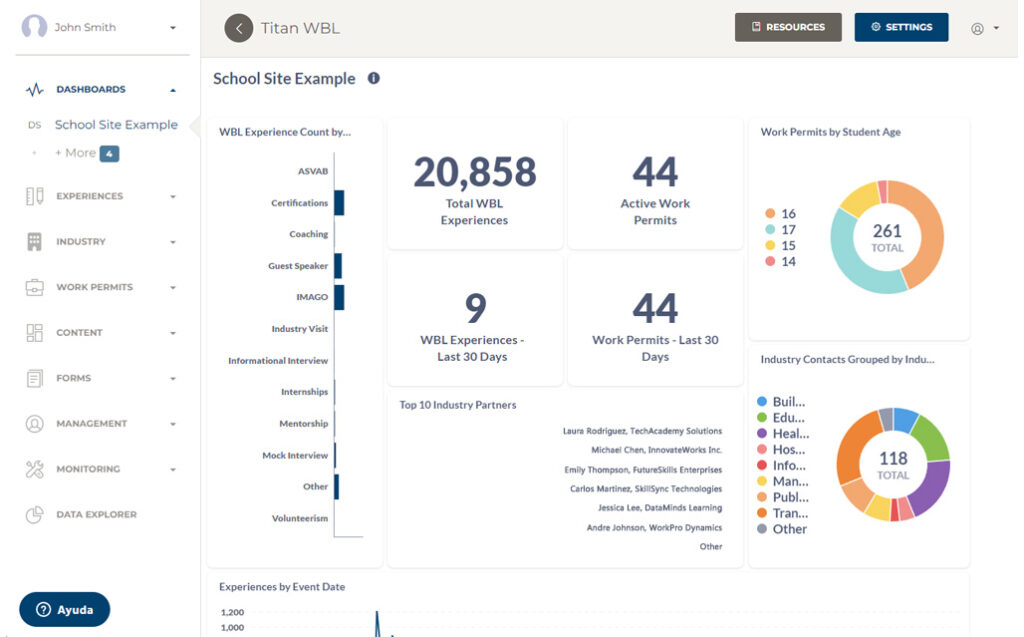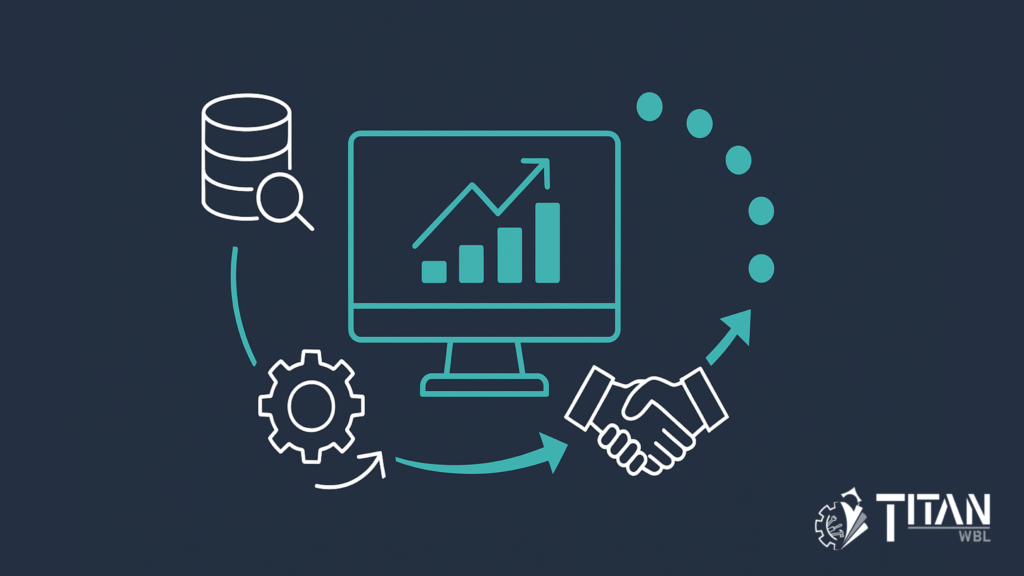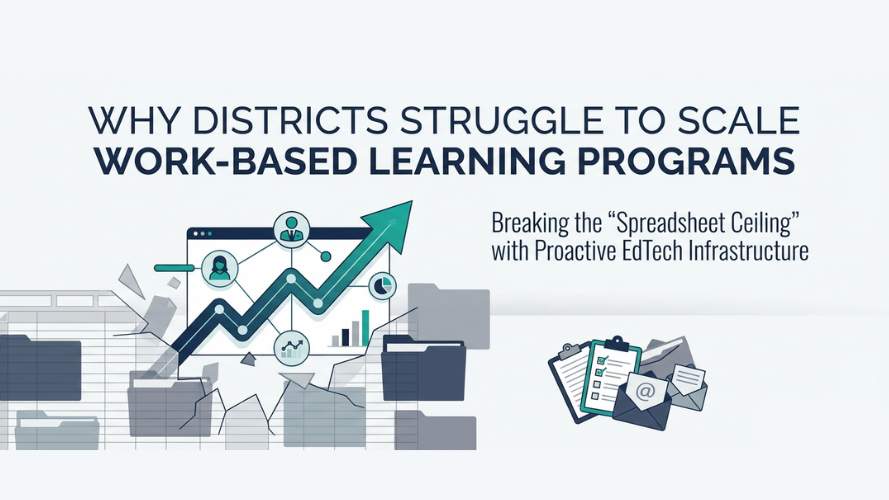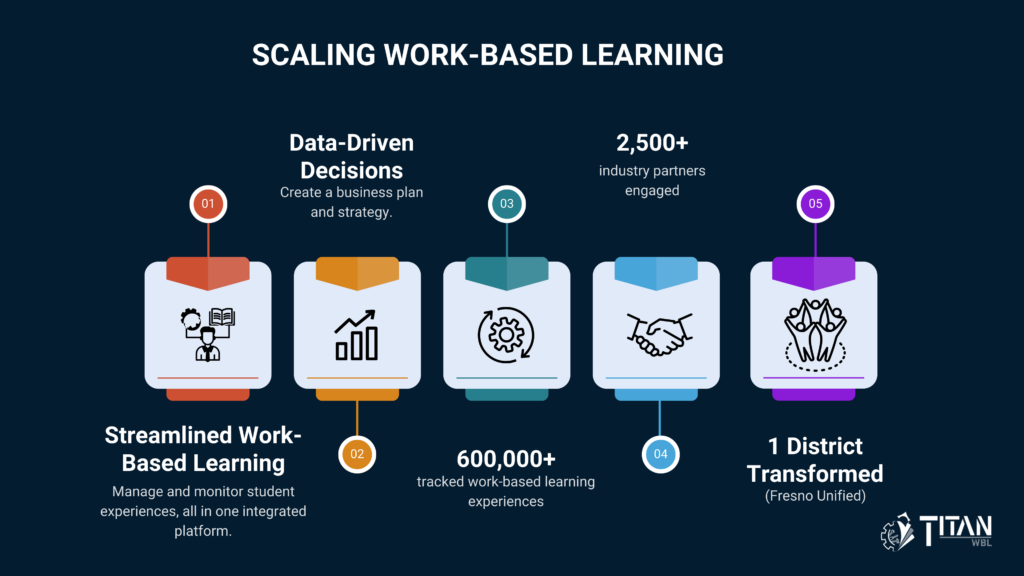Introduction
Across the country, school districts are tasked with preparing students for college, careers, and life. One of the most effective tools available is Work-Based Learning (WBL), which connects classroom education with real-world career experiences. But as districts scale their Career and Technical Education (CTE) programs, many find themselves stuck between two broken systems: spreadsheets that cannot handle complexity, and generic tools that were never designed for K–12.
This is where TitanWBL comes in. TitanWBL was created with one goal: to provide a purpose-built platform for Work-Based Learning management that addresses the unique challenges districts face. In this post, we will explore the story behind TitanWBL, the gaps in the market it was designed to fill, and why it has quickly become the trusted solution for districts nationwide.
The Problem: Districts Were Caught Between Two Bad Choices
When it comes to managing Work-Based Learning, most districts were forced to choose between two unsatisfactory options.
1. Spreadsheets That Do Not Scale
- Coordinators and staff tracked student placements, employer partners, and Work-Based Learning experiences in Excel or Google Sheets.
- This approach quickly led to data chaos: conflicting versions, manual errors, and hours of wasted staff time.
- Compliance reporting became a nightmare, with staff racing against deadlines to reformat data.
2. Generic Systems That Do Not Fit K–12
- Some districts tried to adapt higher education platforms, HR tools, or CRM systems for Work-Based Learning.
- These tools were not designed for CTE or K–12 compliance needs.
- Instead of simplifying the process, they added complexity, forcing staff to work around missing features.
In both cases, districts were spending enormous amounts of staff time and money just to keep programs running, rather than expanding opportunities for students.
The Market Gap in Work-Based Learning Management
Despite the growing emphasis on career readiness, there was no dedicated platform built exclusively for K–12 Work-Based Learning management. District leaders, CTE coordinators, and WBL directors voiced the same frustrations:
- “We are losing track of which students have access to Work-Based Learning.”
- “We cannot tell if our programs are equitable.”
- “Reporting takes us weeks every semester.”
- “We are limited in how many industry partners we can manage.”
The gap was clear: districts needed a platform that could centralize student, staff, and partner data, streamline compliance, and help scale partnerships in one place, without the inefficiencies of spreadsheets or the complexity of mismatched tools.
Why TitanWBL Was Created
The founders of TitanWBL listened to these frustrations firsthand. With experience working alongside school districts, they recognized that the problem was not staff dedication. The problem was the lack of the right tool.
The vision was simple but powerful:
- Build a platform for K–12, not higher education or corporate.
- Prioritize compliance, equity, and scale.
- Save staff time so they can focus on students, not spreadsheets.
- Ensure FERPA compliance and data security from day one.
TitanWBL exists because districts needed a system that understood their world. No existing solution came close.
What TitanWBL Does Differently
TitanWBL is not just another data system. It is an all-in-one Work-Based Learning management platform designed for the realities of K–12 education. Here is how it bridges the gaps:
Centralized Management
Districts can manage students, teachers, industry partners, and advisory boards all in one secure platform. No more scattered spreadsheets or silos.
Compliance-Ready Reporting
TitanWBL automates compliance reports aligned to state and federal standards. Coordinators no longer scramble at the end of each semester.
Equity Insights
Dashboards make it easy to see which student groups are participating in Work-Based Learning and which are being left behind, helping districts close equity gaps.
Time-Saving Automation
Features like Clever SIS sync, digital work permits, and customizable dashboards cut down on repetitive tasks, saving districts hundreds of staff hours per year.
Scalable Partnerships
With dedicated industry partner management tools, districts can grow and sustain relationships with hundreds, even thousands, of employers.
Real Results: From Concept to Impact
The best proof of TitanWBL’s impact comes from districts already using it. Fresno Unified School District, for example, was able to:
- Track 600,000+ Work-Based Learning experiences
- Manage 2,500+ industry partners
- Support 50+ CTE programs
And they did it all after deploying TitanWBL district-wide in under three weeks. Results like these prove that when districts have the right tools, scaling Work-Based Learning becomes not only possible but sustainable.
Other districts have reported similar outcomes, including:
- Significant reductions in staff workload for compliance reporting.
- The ability to identify equity gaps and improve student access to opportunities.
- Streamlined communication and collaboration between schools, industry partners, and advisory boards.
Why TitanWBL Exists: A Platform Built for District Realities
At its core, TitanWBL exists to fix a broken system. Districts were wasting time, money, and energy trying to make spreadsheets and generic tools do what they were never designed to do. The result was frustrated staff, compliance risks, and missed opportunities for students.
TitanWBL fills that gap with a platform purpose-built for K–12 Work-Based Learning management:
- Designed for schools, not businesses.
- Built with compliance and equity at its core.
- Flexible enough to grow with programs.
- Trusted by districts to deliver results quickly.
This focus on district realities is what makes TitanWBL different. It is not a tool adapted from another sector. It is a system created specifically for the challenges that K–12 educators face.
The Future of Work-Based Learning Management

As more states emphasize career readiness and districts expand Work-Based Learning programs, the demand for reliable, scalable management tools will only grow. TitanWBL is ready to meet that demand by helping districts:
- Save staff time
- Ensure compliance
- Improve equity
- Expand opportunities for every student
Work-Based Learning is no longer just an add-on program. It is a core part of preparing students for success. TitanWBL exists to make sure districts can deliver on that promise.
The Founder’s Perspective
Behind TitanWBL is a team that has worked side by side with districts and seen the challenges up close. The founders watched as coordinators poured late nights into spreadsheets, as teachers struggled to secure placements for their students, and as administrators wrestled with compliance reports that were weeks overdue.
They realized that the education system was full of dedicated professionals who were doing everything in their power, but they lacked the technology to support them. The question was never about commitment. It was about capacity. How could one coordinator possibly manage hundreds of student placements, dozens of industry partnerships, and endless compliance requirements without the right system?
That is why TitanWBL was created. It was not to replace staff or reduce human impact. It was to empower staff by giving them back their time, their clarity, and their ability to focus on what matters most: creating meaningful Work-Based Learning opportunities for students.
Conclusion
TitanWBL was built because districts needed a better way. Not another spreadsheet. Not another mismatched tool. A true solution for Work-Based Learning management in K–12.
By fixing the gaps, TitanWBL empowers districts to stop treading water and start scaling opportunities for every student. That is why TitanWBL exists, and that is why districts across the country are making the switch.
References and Further Reading
- U.S. Department of Education Work-Based Learning Toolkit
Federal guidance on designing, managing, and scaling Work-Based Learning programs. - Jobs for the Future Work-Based Learning Framework
A national framework that defines high-quality Work-Based Learning and how districts can scale effectively. - Advance CTE: State Strategies for Scaling Work-Based Learning
Policy strategies and best practices for states and districts to expand access. - Spreadsheet Risk Management in Organizations (Research Paper)
Academic research on why spreadsheets introduce compliance and accuracy challenges at scale.










